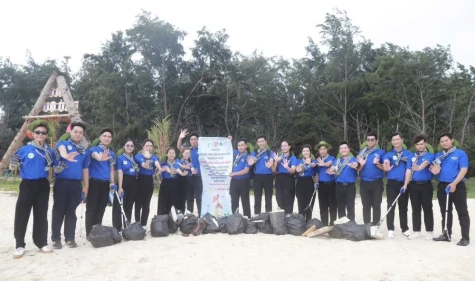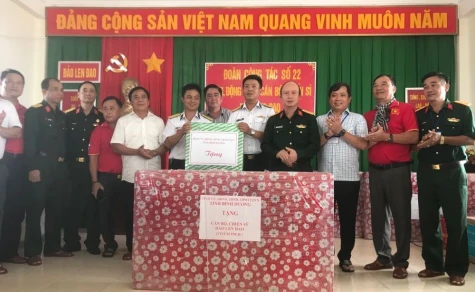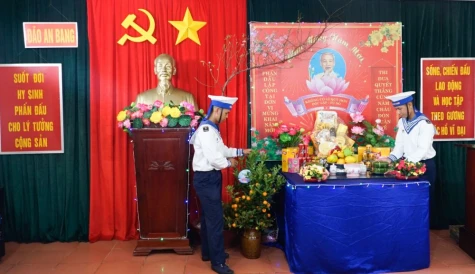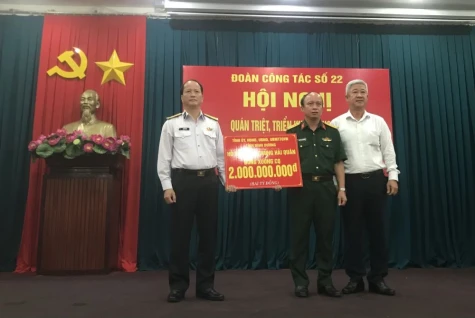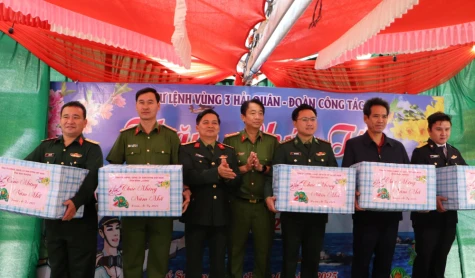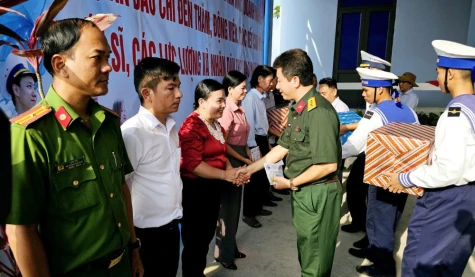The Code of Conduct (COC) in the South China Sea, known as the East Sea in Vietnam, will be formulated to address shortcomings from its predecessor – the Declaration on the Conduct of Parties in the regional waters (DOC).
DOC fails to fulfil mission

ASEAN holds a Code of Conduct in the South China Sea is needed after the Declaration on the Conduct of Parties proves not to be much effective in reality.
The DOC in the South China Sea, signed in the Cambodian capital of Phnom Penh in 2002, is a political commitment that sets out the principle of self-restraint and co-operation in less sensitive areas, among other provisions.
After two decades of implementation, the DOC has failed to prevent the parties from reinforcing their positions in the regional waters, with some even moving to expand and develop military bases on semi-submerged shoals, claiming they are their own waters. Such actions apparently violate the 1982 UN Convention on the Law of the Sea (UNCLOS 1982).
Parties involved in the DOC have not done anything in even less sensitive fields such as environmental protection, hydrographic measurement, and scientific research in the South China Sea, with the exception of a co-operation project between Vietnam and the Philippines. Project investors invited relevant parties, including China, but the project was eventually put on hold for a long time due to many factors.
Commenting on the mission of the DOC, Ambassador Nguyen Hong Thao, a veteran Vietnamese diplomat and legal expert, told VOV.VN that the document had not fulfilled its mission, particularly as it was unable to prevent actions that further complicate the situation.
“The current situation is even more complicated than before the DOC was formulated as evidenced by collisions of fishing boats, the destruction of coral reefs to build bases, the violation of environmental laws and the lack of joint scientific research projects,” said Ambassador Thao.
COC and barriers to negotiations

Ambassador Nguyen Hong Thao, a veteran Vietnamese diplomat and legal expert to the United Nations
Since 2002, a number of incidents have occurred in the South China Sea, thereby casting doubt on the overall effectiveness of the DOC. Among them were the 2012 Scarborough Shoal standoff between China and the Philippines, the 2014 rig crisis between China and Vietnam, and China’s decision to build and militarise seven artificial islands on the Vietnamese Truong Sa (Spratly) archipelago, despite facing public protests.
Other less serious but equally worrying incidents are related to China’s continued harassment of Vietnamese oil and gas exploitation activities in its exclusive economic zone (EEZ), as well as violent attacks on Vietnamese fishermen in the waters surrounding the Hoang Sa (Paracel) archipelago.
These worrying incidents require regional countries to build a substantive and effective Code of Conduct (COC) aimed at creating a peaceful environment for further co-operation and development.
“The countries desire to formulate a COC that address limitations of the DOC, and the effectiveness of the document must be visible in reality. To be effective, we must have an inspection mechanism that has not been seen in the DOC,” said Ambassador Thao.
The Vietnamese diplomat went on to point out that the biggest entanglement between ASEAN and China is that the two sides have different viewpoints on the matter.
Firstly, countries in the bloc desire to have specific governing rules, while China only wants to make general principles.
Secondly is the scope of the COC application. China only wants to apply the agreement to the Truong Sa archipelago, while Vietnam wants the agreement to govern both its Truong Sa and Hoang Sa islands. In addition, the Philippines is keen for the Scarborough Shoal to be included in the agreement, although China rejects the proposal.
Thirdly, both sides have shown differences in the potency and effectiveness of the agreement. ASEAN hopes to have a legally binding inspection mechanism, a requirement rejected by China.
Furthermore, detailed proposals aimed at controlling the excessive behavior of parties in the South China Sea have been rejected due to the Chinese belief that the situation in the waters remains under control.
At the same time, China has proposed that oil and gas exploration and exploitation in disputed waters only be carried out by countries which share the South China Sea without the co-operation of foreign companies in the region. It also holds that parties to the COC may not conduct military exercises with foreign countries, unless the countries concerned are informed and do not object.
China and its requirements
Apparently these Chinese proposals fail to respect the maritime sovereignty and jurisdiction of countries in the South China Sea as it largely forces other countries to accept putting aside disputes for joint exploitation in their own waters. Granting approval to China’s proposals means accepting the deployment of military forces and the presence of Chinese companies in all areas of maritime activities in the region. This would result in reducing the influence of countries outside the region and negating the military exercises of regional countries with the US, Japan, the Republic of Korea, and India.
Observers note that in order to achieve a breakthrough in solving the current problem in the South China Sea, Beijing will have to accept that there is no so-called ‘historical right’ under the terms of the 1982 UNCLOS to which it is a signatory. It is worth remembering that the UNCLOS was introduced back in 1982 and accepted by the international community. China also voluntarily accepted the UN document in 1996 without any pressure from outside powers.
ASEAN consists of 10 countries, but only four of them have direct disputes with China over the South China Sea. The bloc shares the common interest in peace and stability in the waters, although its common voice varies among different interest groups which is also a challenge in COC negotiations between ASEAN and China.

Prof. Carl Thayer of the Australian Defense Force Academy.Prof. Carl Thayer of the Australian Defense Force Academy.
Prof. Carl Thayer of the Australian Defense Force Academy, in an interview with VOV.VN, emphasised that the parties must reach a consensus through negotiations. The biggest obstacle to current negotiations, according to the researcher, is China’s daily aggressions, aside from COVID-19 making face-to-face meetings more difficult.
Against this backdrop, during a visit to Phnom Penh in August 2021, Chinese Foreign Minister Wang Yi said he hoped the COC could be signed in 2022 when Cambodia presides over ASEAN. Many people have subsequently raised the question of why China is so enthusiastic about the COC, although in the past it often ignored ASEAN’s calls to sit at the negotiating table.
There are two factors that have contributed to China’s change in approach, according to Prof. Thayer.
This includes ASEAN’s consolidation of unity after the ‘incident’ that occurred in Phnom Penh in 2012 and the Philippines’ unilateral decision to initiate legal proceedings against China, said the researcher.
However, the fact that China wants to get the COC done soon does not mean it has realised the problem and changed its attitude to a more positive direction, but instead Beijing makes its own calculations.
VOV








